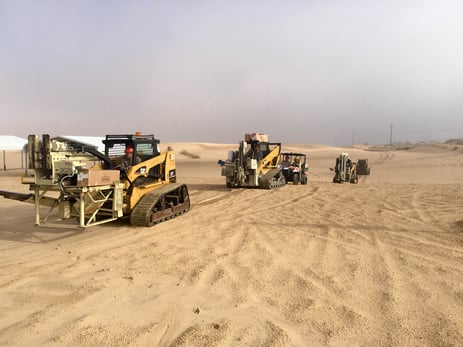A Phase II Site Assessment is often performed with the help of a Geoprobe. Often times, a Geoprobe is used for sampling and drilling, as this is preferred over a conventional drilling equipment. That’s why Talon/LPE often enlists the help of a Geoprobe.

What is a Phase II Environmental Site Assessment?
Phase II Environmental Site Assessments (ESA) take place after a Phase I. These assessments are performed if contamination was found in the Phase I. However, if there was no contamination found in the Phase I, there is no need to pursue a Phase II ESA.
A Phase II helps to determine the extent of contamination at the site. A plan of remediation is established during this time, allowing all parties involved to know the cost and time that will likely be associated with this remediation project. Furthermore, a plan of action must be approved by all local, state and federal environmental agencies.
What is a Geoprobe and Why Use It?
A Geoprobe is a direct-push machine that allows for sub surface sampling in a cost effective manner. It drives hollow boring rods down into the ground using static and percussive force. The benefits of using a Geoprobe are ample and can be seen below:
-
It offers accurate soil profiling.
-
It offers access to groundwater tables at discrete depths.
-
It allows the assessment crew to take multiple kinds of samples.
-
It has a small footprint that does not limit access.
-
It is possible to take several samples in a restricted area.
-
It creates minimal waste.
-
It can do a lot of work in a small amount of time.
-
It is cost-effective.
Talon/LPE currently operates 5 Geoprobes, including Limited Access and Truck Mounted Geoprobes. We have the experience and the equipment to perform any job needed in a Phase II Site Assessment. Contact us today using the button below.


